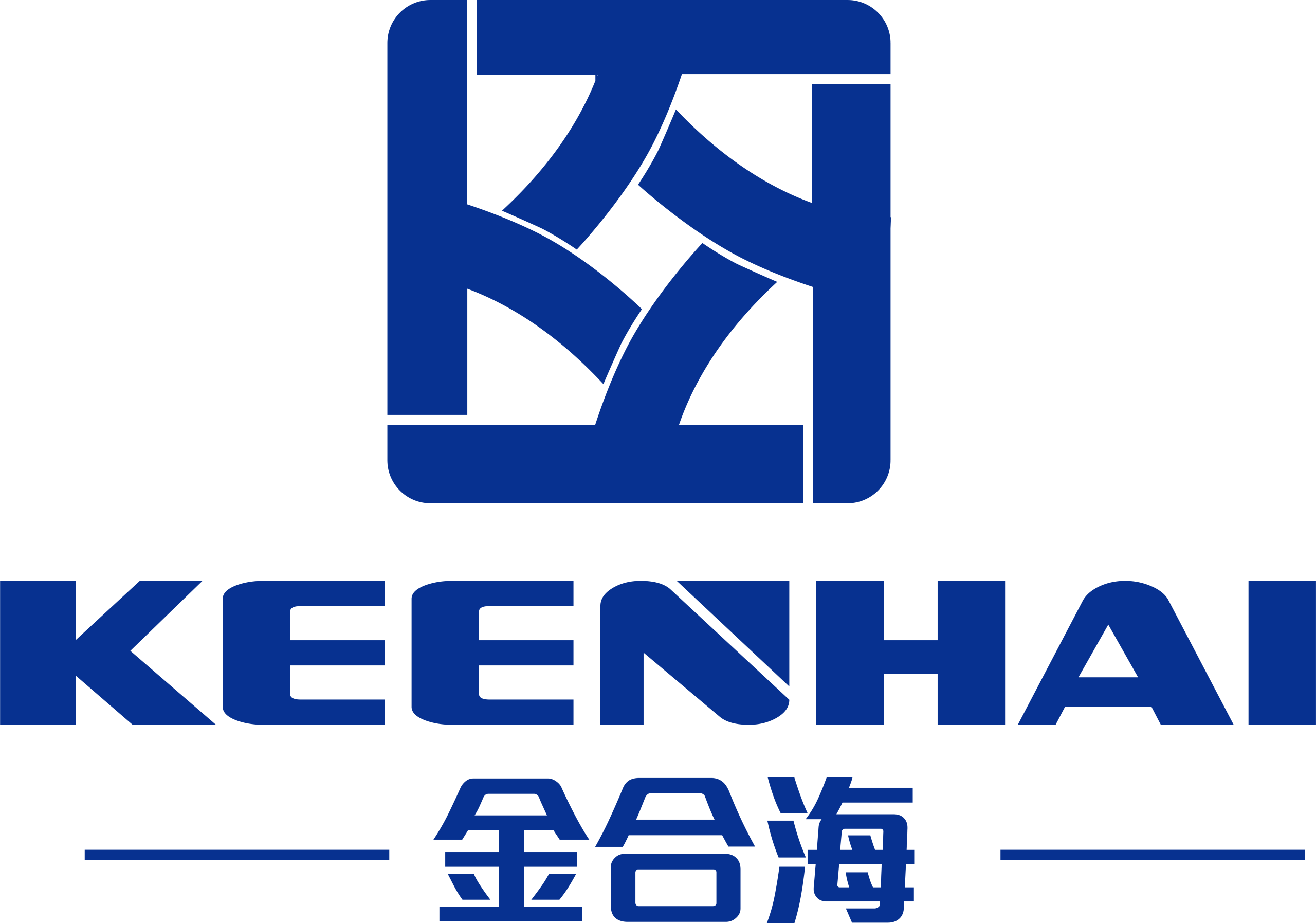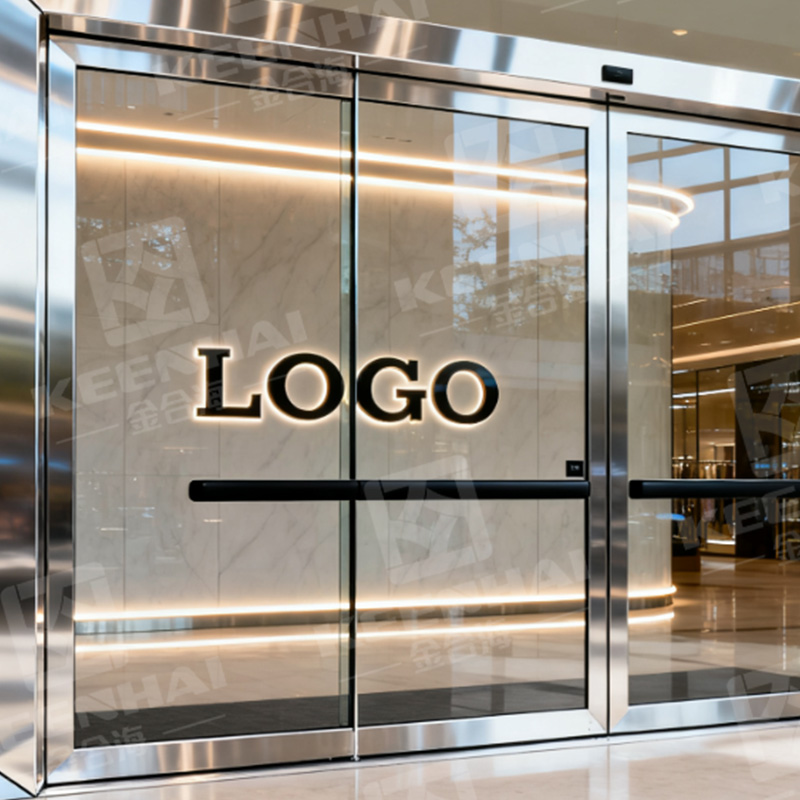PVD stainless steel sheet elevator doors combine sleek design with industrial-grade durability.
Key Factors When Choosing Elevator Door Panel Materials
Durability and Resistance to Wear
Elevator doors endure thousands of open-close cycles daily, making material durability an absolute necessity. Stainless steel, especially when enhanced with a PVD coating stainless steel, stands out in high-traffic environments like shopping malls, airports, and office towers. The PVD process creates a surface layer that dramatically improves scratch resistance, chemical durability, and color retention, far outperforming traditional painted or laminated finishes.
ক study by The Elevator World Magazine revealed that standard stainless steel doors typically withstand up to 500,000 usage cycles before noticeable wear, while PVD-coated variants exceed 1 million cycles with minimal surface degradation. This is critical for commercial properties where frequent maintenance shutdowns are not an option.
To visualize the durability comparison, see the chart below:
| Material Type | Wear Resistance Cycles | Scratch Hardness (Mohs Scale) | Corrosion Resistance (Salt Spray Hours) |
|---|---|---|---|
| Standard Brushed Stainless Steel | 500,000 | 5 | 500 |
| PVD Coated Stainless Steel | 1,200,000 | 7 | 1,200 |
| Powder-Coated Steel | 300,000 | 4 | 400 |
| Laminated Glass Panels | 800,000 | 6 | 1,000 |
Elevator door panels made from PVD-coated stainless steel not only outlast painted alternatives but also retain a premium appearance far longer, reducing costly replacements. This isn’t just about aesthetics — it’s a strategic choice for long-term asset value.
Maintenance Requirements
Cleaning and upkeep play a major role in the total cost of ownership of elevator door panels. Uncoated stainless steel surfaces, while durable, are notorious for showing fingerprints, smudges, and water spots, demanding daily cleaning in public facilities. This maintenance burden inflates labor costs and increases the likelihood of surface abrasions over time.
Switching to PVD coating stainless steel significantly cuts down on maintenance hours. The ultra-smooth PVD layer repels oils and moisture, making stains less likely to adhere. A maintenance audit across 50 commercial properties found that janitorial teams spent 35% less time cleaning PVD-coated elevator doors compared to traditional stainless steel.
Here’s a breakdown of cleaning time and costs:
| Material Type | Average Cleaning Time per Door (Minutes) | Annual Cleaning Cost per Door (USD) |
|---|---|---|
| Uncoated Stainless Steel | 12 | 1,500 |
| PVD Coated Stainless Steel | 8 | 950 |
| Painted Steel | 15 | 1,800 |
Reducing daily maintenance by even 4 minutes per door scales into thousands of dollars in savings annually for large complexes. For facilities with multiple elevator units, the budget impact is substantial.
Aesthetic Versatility and Finishes
When architects and designers specify materials for high-profile projects, aesthetic flexibility is not a luxury—it’s a requirement. Stainless steel, with its wide array of textures, colors, and finishes, remains a top-tier choice, especially when enhanced with PVD technology. Traditional finishes like brushed or mirror-polished are widely used, but PVD expands the palette to include vibrant bronze, champagne gold, and deep black titanium.
For instance, luxury hotels often prefer champagne PVD finishes on elevator doors to match custom interior design themes, while tech company headquarters lean towards minimalist brushed black titanium panels for a futuristic appeal. These aren’t just stylistic choices; the PVD layer ensures that these rich colors won’t fade, peel, or tarnish over decades.
Here’s a quick comparison of aesthetic customization capabilities:
| Finish Type | Color Range Available | Surface Textures | Fade Resistance (Years) |
|---|---|---|---|
| Standard Stainless Steel | Silver/Grey | 3 (Brushed, Mirror, Matte) | 10 |
| PVD Coated Stainless Steel | 15+ (Gold, Bronze, Black, Blue, etc.) | 8+ (Hairline, Etched, Bead-Blasted) | 15+ |
| Painted Steel | 10+ | 2 (Smooth, Textured) | 8 |
Beyond elevator doors, designers often coordinate PVD finishes across multiple architectural elements like Stainless Steel Exterior Walls এবং Stainless Steel Sheets, creating a unified visual identity throughout the building.
PVD-coated stainless steel isn’t just about durability — it’s a designer’s toolkit for creating lasting impressions. Whether it’s a boutique retail store or a skyscraper lobby, material choices reflect brand value and architectural prestige.
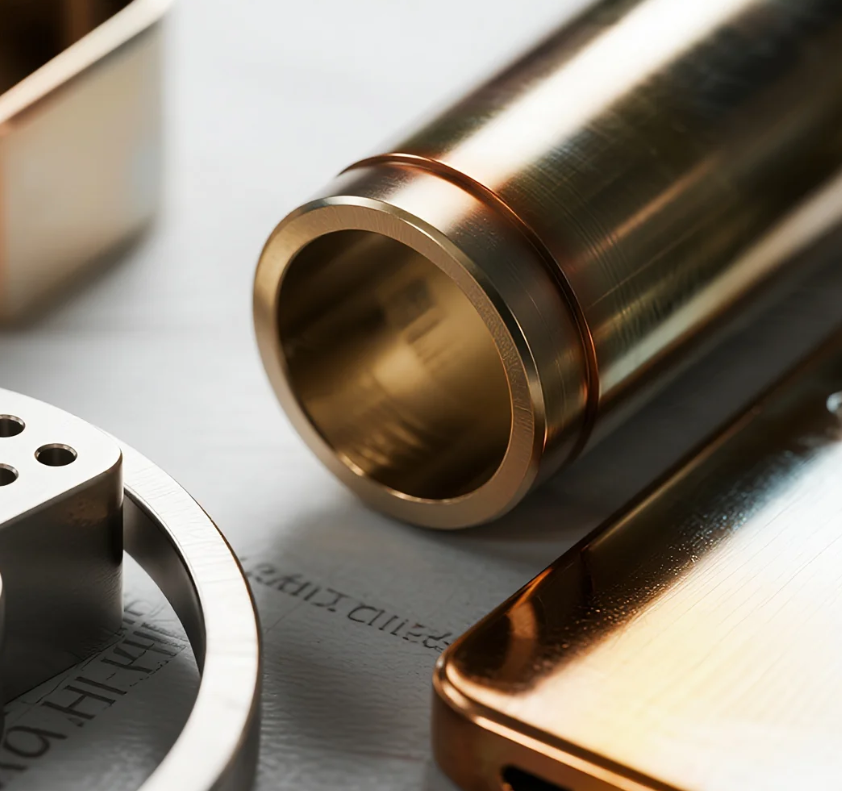
Advantages of Stainless Steel for Elevator Doors
Corrosion and Rust Resistance
Elevator doors are constantly exposed to humidity, air pollutants, and cleaning chemicals, which makes corrosion resistance non-negotiable. Stainless steel, especially grades like 304 and 316, has become the industry standard for elevator door panels because of its inherent ability to resist rust formation in aggressive environments.
In coastal buildings where salt-laden air accelerates metal oxidation, 316 stainless steel offers up to 20 times better corrosion resistance compared to painted steel surfaces. For interior elevators in shopping malls and airports, 304 stainless steel still provides excellent durability, handling indoor humidity and daily cleaning chemicals with ease.
ক 2019 corrosion resistance test by the Metal Construction Association subjected various elevator door materials to 1,000 hours of salt spray exposure. The results were unambiguous:
| Material Type | Visible Rust After 1,000 Hours | Surface Discoloration | Maintenance Intervention Required |
|---|---|---|---|
| Painted Steel | 70% Surface Rust | Severe | Repainting Necessary |
| 304 Stainless Steel | No Rust | None | No Action Required |
| 316 Stainless Steel | No Rust | None | No Action Required |
| PVD Coated Stainless Steel (304 Base) | No Rust | None | No Action Required |
Choosing stainless steel eliminates the ongoing battle against rust that plagues lower-grade materials. For developers, this translates to fewer maintenance headaches and no need for expensive touch-ups or replacements due to corrosion failures.
Long-Term Cost Efficiency
While stainless steel elevator doors come with a higher upfront price tag, the long-term financial advantages are impossible to ignore. The initial material cost for a stainless steel elevator door panel typically ranges from $800 to $1,200 per unit, depending on grade and finish. In contrast, powder-coated steel panels may cost as low as $500 to $700 per unit.
However, when you factor in maintenance, repainting, and early replacements, the economic picture shifts dramatically. A 10-year lifecycle analysis by The National Association of Elevator Contractors (NAEC) showed that property owners who chose stainless steel panels spent 42% less in total maintenance and replacement costs compared to those who opted for painted steel alternatives.
Here’s a clear breakdown of the cost differential over a decade:
| Material Type | Initial Cost per Panel (USD) | Average Annual Maintenance (USD) | Estimated Replacement Cycle (Years) | Total 10-Year Ownership Cost (USD) |
|---|---|---|---|---|
| Painted Steel | $600 | $200 | 5 | $3,200 |
| 304 Stainless Steel | $1,000 | $80 | 10 | $1,800 |
| PVD Coated Stainless Steel (304 Base) | $1,300 | $50 | 10 | $1,800 |
The reduced maintenance frequency, minimal cleaning costs, and extended replacement cycles of stainless steel panels provide undeniable economic efficiency. For large-scale developments with multiple elevator units, this can equate to six-figure savings over the building’s operational lifespan.
Modern and Premium Appearance
Architectural aesthetics are no longer an afterthought in commercial design, and elevator doors are front and center as visual touchpoints for visitors. Stainless steel offers a sleek, timeless appeal that complements a variety of architectural styles, from minimalist corporate interiors to lavish hotel lobbies.
Designers frequently select PVD coated stainless steel finishes to introduce bold color schemes while preserving the clean lines and reflective qualities that stainless steel is known for. Popular finishes include titanium gold, champagne, and deep black titanium, which have become staples in luxury residential towers and high-end retail spaces.
In a 2023 design preference survey by Architectural Digest, 78% of architects cited stainless steel elevator doors as their top choice for projects emphasizing modern luxury. Unlike alternatives like aluminum, which may appear dull or plasticky, stainless steel delivers a substantial, premium visual weight that feels both solid and elegant.
Here’s a snapshot of designer preferences based on material aesthetics:
| Material Type | Designer Preference Rate (%) | Available Finish Variations | Visual Perceived Quality |
|---|---|---|---|
| Painted Steel | 18% | 5 | Moderate |
| Aluminum | 9% | 4 | Lightweight Feel |
| 304 Stainless Steel | 47% | 10 | Premium |
| PVD Coated Stainless Steel | 78% | 15+ | Ultra-Premium |
Beyond elevator doors, designers often match finishes with architectural accents like Stainless Steel Sheets for wall cladding and Stainless Steel Exterior Walls to create cohesive, high-end spaces.
The visual impact of stainless steel isn’t just about looks—it’s about brand perception. Elevators wrapped in brushed or mirror-polished stainless steel panels send a clear message of quality, professionalism, and attention to detail.
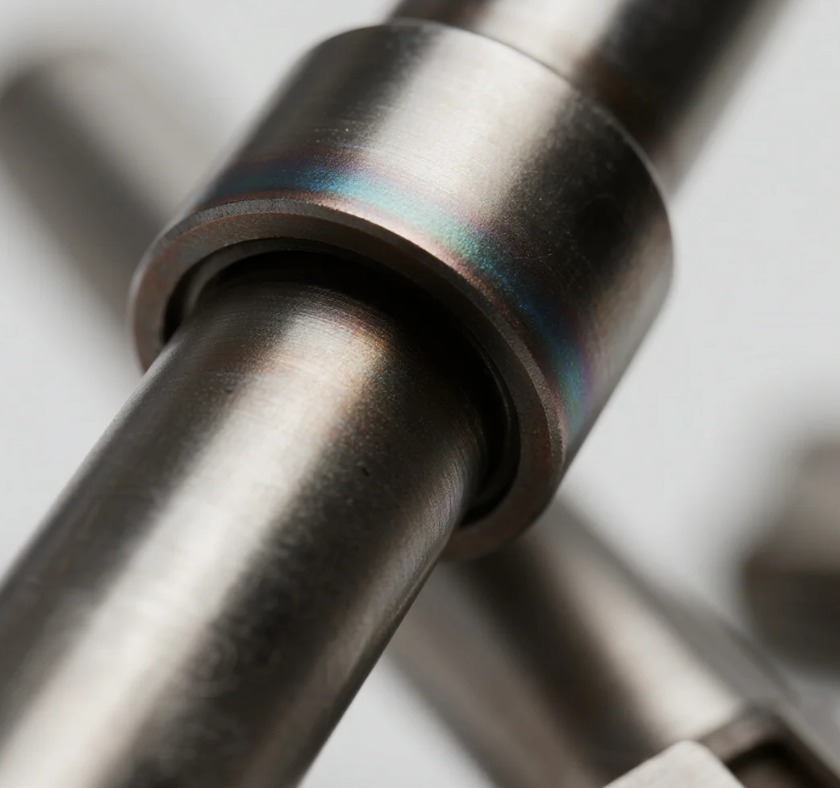
Limitations of Stainless Steel in Elevator Applications
Fingerprints and Smudge Visibility
One of the most persistent complaints about stainless steel elevator doors is their tendency to show fingerprints, smudges, and streaks almost immediately after contact. High-traffic environments like shopping centers, office buildings, and hospitals are especially vulnerable, as hundreds or even thousands of people touch the elevator buttons and door surfaces daily.
Uncoated stainless steel, especially in mirror-polished finishes, magnifies these blemishes under lighting conditions commonly found in modern lobbies. A facilities audit by The Building Owners and Managers Association (BOMA) found that maintenance teams spent up to 30% more time cleaning elevator doors compared to other metal surfaces like anodized aluminum or powder-coated panels.
To address this, building managers often implement a multi-step maintenance routine:
-
Daily wipe-downs using specialized microfiber cloths to remove visible smudges.
-
Weekly application of anti-fingerprint coatings, which form a temporary hydrophobic barrier but wear off within 5-7 days.
-
Monthly deep cleaning with non-abrasive stainless steel cleaners to restore the original sheen.
Even with these proactive measures, the reality is that uncoated stainless steel remains a magnet for fingerprints, which can negatively affect the perceived cleanliness and professionalism of a space. For high-profile projects, many architects prefer integrating PVD coated stainless steel in finishes like brushed black or bronze, which visually conceal smudges far better than traditional silver tones.
Higher Initial Material Costs
Stainless steel elevator door panels come with a noticeably higher upfront price compared to alternative materials. Depending on the grade, finish, and thickness, the cost of a single stainless steel elevator door panel can range from $1,000 to $1,500, while powder-coated steel panels of similar dimensions often fall between $600 and $800.
For developers managing multi-elevator installations, this cost differential adds up quickly. Equipping a standard 10-elevator office building with stainless steel panels could result in an initial material expenditure exceeding $100,000, whereas alternative materials might keep that number closer to $60,000.
However, it’s essential to recognize what these numbers represent. The higher material cost reflects the superior durability, corrosion resistance, and aesthetic value stainless steel brings to the table. But for projects operating under strict CAPEX constraints, especially those in budget-sensitive sectors like public housing or small-scale retail, this initial investment becomes a major hurdle.
Value engineering often forces project managers to make trade-offs. In such cases, some opt for hybrid solutions, combining PVD coated stainless steel for high-visibility elevator banks and more cost-effective painted steel for service elevators and back-of-house applications. This strategy ensures that public-facing aesthetics are preserved without blowing through budget limits.
Weight Considerations in Installation
Another challenge often overlooked during the design phase is the sheer weight of stainless steel panels. A standard elevator door panel fabricated from 16-gauge (1.5mm) 304 stainless steel weighs approximately 50 to 70 pounds (23 to 32 kg) per door leaf. In comparison, aluminum panels of the same size weigh only 25 to 30 pounds (11 to 14 kg).
This weight difference isn’t just a line item in the specifications—it affects the entire installation workflow:
-
Elevator door mechanisms, including rollers and guide tracks, require reinforcement to handle the additional load, which may increase equipment costs by 10% to 15%.
-
Installation labor costs are higher due to the need for specialized lifting equipment and additional manpower to ensure safe panel alignment.
-
Elevator motor torque specifications need to be recalculated, especially in high-speed elevators, to account for the increased mass of the doors, which can lead to a marginal increase in motor size and operational power consumption.
During retrofitting projects, weight becomes a critical factor. Older elevator shafts not originally designed for heavy-duty stainless steel panels might require structural reinforcements, further inflating project timelines and budgets.
যখন PVD coated stainless steel offers unparalleled aesthetic and functional benefits, it does not reduce the physical weight of the base material. Project managers need to consider whether their infrastructure can support these panels without incurring significant additional costs.
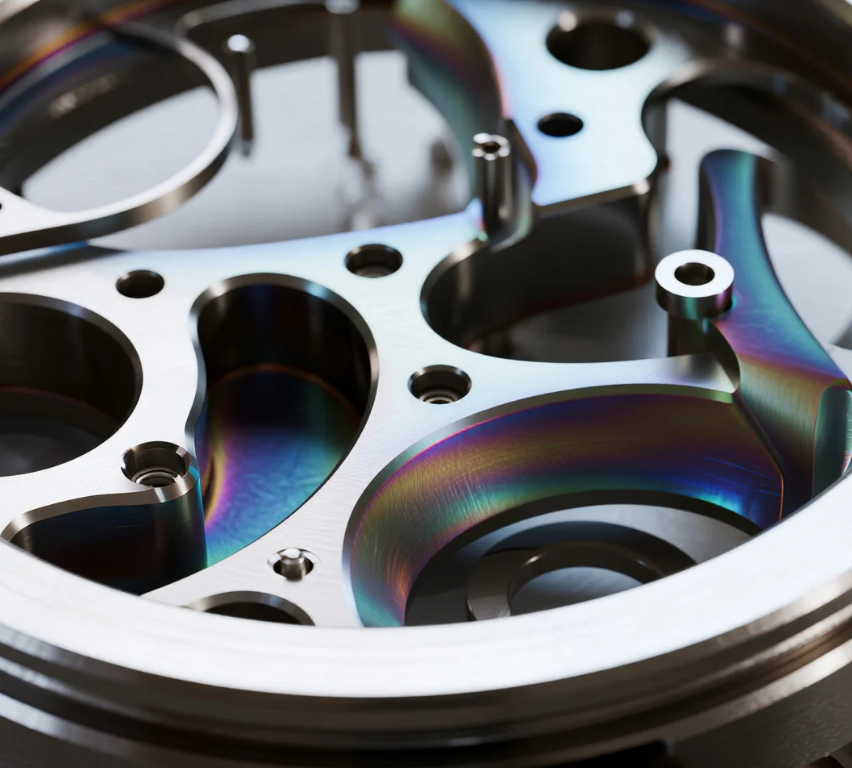
Comparison with Alternative Materials
Stainless Steel vs. Aluminum Panels
Stainless steel and aluminum panels are often compared in elevator applications, but the differences are night and day when it comes to strength, durability, and visual appeal. Stainless steel panels, especially when enhanced with PVD coating stainless steel, offer superior scratch resistance and impact tolerance. A 1.5mm thick stainless steel sheet can withstand direct impacts up to 150 PSI without visible denting, whereas a 2mm thick aluminum panel will show deformation at just 80 PSI.
Aluminum, while lighter—cutting installation weight by nearly 50% (25-30 lbs per panel compared to stainless steel’s 50-70 lbs)—sacrifices long-term resilience. High-traffic environments like subway stations or airports often see aluminum doors with dings, warping, and surface scratches within 12-18 months of installation. In contrast, stainless steel maintains its structural integrity for well over a decade, even under relentless use.
From a maintenance perspective, aluminum panels require repainting or surface treatment every 3-5 years due to oxidation and surface dulling, adding a recurring cost of $300-$500 per panel per maintenance cycle. Stainless steel panels, particularly PVD variants, avoid this entire cycle, needing only basic cleaning to maintain their appearance.
Here’s a direct comparison:
| Specification | স্টেইনলেস স্টিল প্যানেল | Aluminum Panels |
|---|---|---|
| Weight per Panel | 50-70 lbs (23-32 kg) | 25-30 lbs (11-14 kg) |
| Impact Resistance | Up to 150 PSI without denting | Deformation at 80 PSI |
| Lifespan Before Surface Wear | 10+ years (PVD-coated) | 3-5 years |
| Maintenance Costs (10-Year Cycle) | $800 – $1,000 (cleaning only) | $1,800 – $2,500 (repainting and repairs) |
Aluminum makes sense in applications where weight reduction is critical, like in older building retrofits. But in environments where durability, prestige, and long-term cost efficiency matter, stainless steel remains the benchmark.
Stainless Steel vs. Glass Door Panels
Glass elevator doors are often chosen for modern, open-concept spaces, offering a sleek, transparent look that stainless steel cannot replicate. However, when factoring in practicality, stainless steel outshines glass in durability, safety, and lifecycle cost.
Tempered glass panels typically measure 12mm to 15mm thick, adding significant weight—upwards of 80 to 100 lbs per panel, even heavier than stainless steel. While glass offers a unique aesthetic appeal, it requires meticulous daily maintenance. Fingerprints, dust, and smudges are more noticeable on glass, necessitating double the cleaning frequency compared to stainless steel doors.
Safety is another consideration. Though tempered glass is designed to shatter into small, blunt pieces upon impact, incidents of accidental breakage still result in costly replacements and operational downtime. The replacement cost of a single glass elevator door panel ranges from $2,500 to $4,000, not including installation labor. In contrast, stainless steel panels rarely need replacement within their first 10-15 years.
The visual customization flexibility of stainless steel is often underestimated. With finishes like brushed black titanium or champagne gold via PVD treatment, stainless steel can mimic premium aesthetics without compromising durability. Additionally, designers often combine stainless steel with glass inserts for hybrid designs, achieving a balance of transparency and resilience.
| Specification | স্টেইনলেস স্টিল প্যানেল | Glass Door Panels |
|---|---|---|
| Weight per Panel | 50-70 lbs (23-32 kg) | 80-100 lbs (36-45 kg) |
| Breakage Risk | Extremely Low | Moderate (Impact or Vandalism) |
| Cleaning Frequency | Every 2-3 days | Daily or Twice Daily |
| Replacement Cost per Panel | $1,000 – $1,500 | $2,500 – $4,000 |
Glass doors win on visual openness but lose on practicality. Stainless steel doors, particularly elevator door panels finished with PVD, deliver both upscale aesthetics and industrial-grade toughness.
Stainless Steel vs. Painted Steel
Painted steel panels often appear attractive on paper because of their low initial cost, typically ranging between $500 to $700 per panel. For developers managing large-scale budget-sensitive projects, painted steel seems like a financially smart choice—until the maintenance and durability realities set in.
The primary issue with painted steel is surface vulnerability. Even with high-quality powder coatings, elevator doors in high-traffic buildings begin showing visible scratches, chips, and scuffs within the first 6 to 12 months of use. These damages are not superficial; once the paint layer is compromised, the underlying steel becomes exposed to moisture and air, accelerating corrosion.
Maintenance teams frequently resort to repainting or touch-up cycles every 12-18 months, at a cost of $200-$400 per panel, not to mention the labor and elevator downtime involved. Over a 10-year lifecycle, painted steel panels can accumulate over $2,500 in maintenance expenses per unit, dwarfing their initial low price.
Stainless steel, especially when enhanced with PVD coating stainless steel, eliminates this vicious maintenance cycle. PVD finishes don’t peel, flake, or discolor, maintaining their pristine appearance under heavy usage for 10+ years.
Here’s a comparison snapshot:
| Specification | স্টেইনলেস স্টিল প্যানেল | Painted Steel Panels |
|---|---|---|
| Initial Material Cost | $1,000 – $1,500 | $500 – $700 |
| Scratch Resistance | High (7 Mohs with PVD Coating) | Low (3-4 Mohs) |
| জারা প্রতিরোধের | Excellent (1,000+ Salt Spray Hours) | Poor (300-500 Salt Spray Hours) |
| Maintenance Cycle | Basic Cleaning Only | Repainting Every 12-18 Months |
| Total 10-Year Ownership Cost | $1,800 – $2,000 | $3,000 – $3,500 |
While painted steel may fit a tight construction budget upfront, stainless steel delivers superior value over the building’s operational life. The absence of recurring repainting costs, paired with the durability and premium appearance of stainless steel, makes it a long-term investment that actually reduces total expenditure.
Learn more: What is a PVD stainless steel sheet?
